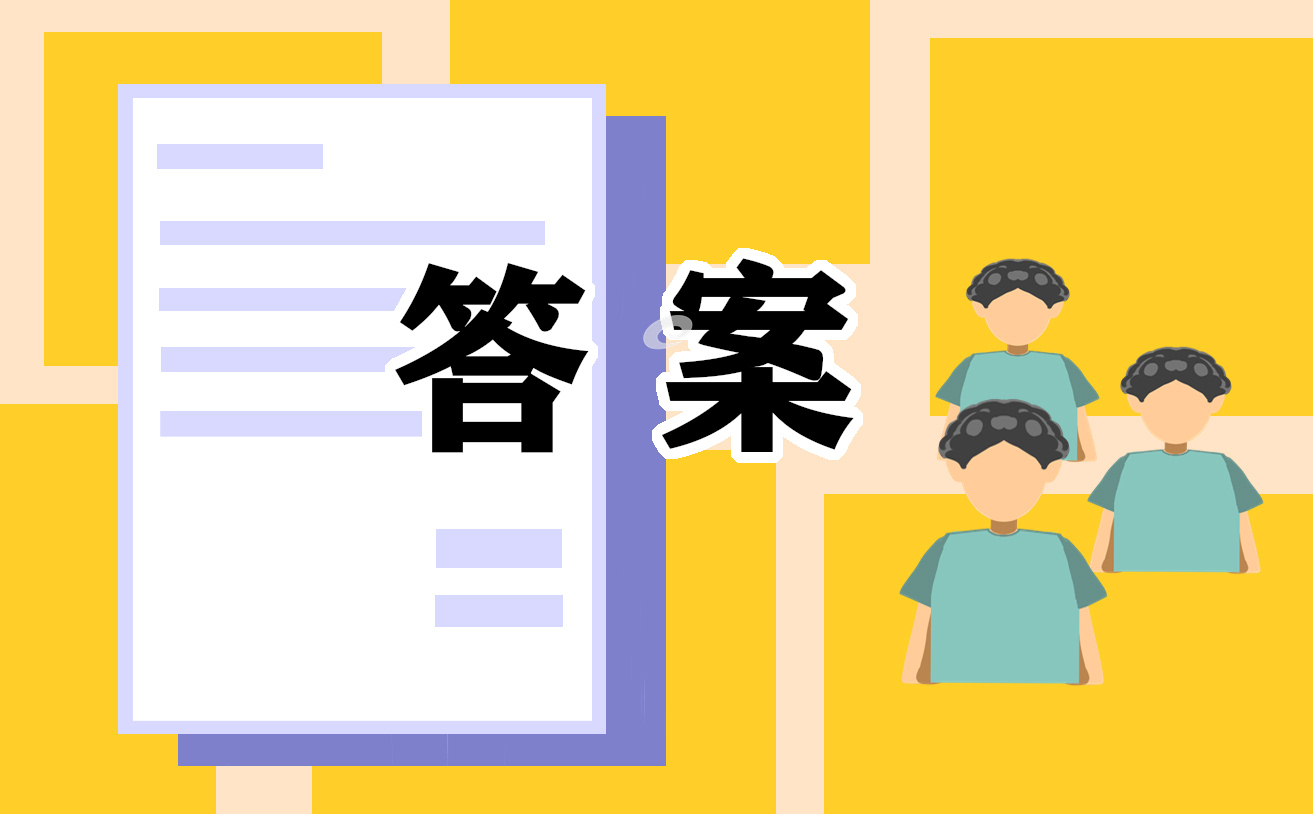英语第六单元补充习题答案六年级上
随着全球化与多元文化的发展,英语正跻身为一种国际语言被广泛使用。那么你知道小学六年级英语上册第六单元补充习题答案吗?下面小编就跟大家聊聊关于英语第六单元补充习题答案六年级上吧,希望能帮助到大家。

Unit 6 Keep our city clean 补充习题答案
A Listen and number
录音文字稿:
1. We can take the bus or the metro to school.
2. We can go to school by bike.
3. We can plant more trees to keep the air clean.
4. We can put rubbish in the bin.
5. The street is dirty and messy.
6. Black smoke from the factories makes the air dirty.
参考答案:
a 2 b 6 c 5 d 3 e 1 f 4
B Listen and choose
录音文字稿:
1. Please put your rubbish in the bin. We should keep the park clean.
2. Look at your books and toys, Mike. They make your bedroom so messy.
3. There is a lot of rubbish in the river. The river is dirty and the fish are dead.
4. The table is dirty. There is some milk and water on it. Please clean it.
5. To keep the classroom clean, we should sweep the floor every day. We should clean our desks and chairs too.
参考答案:
1. a 2. a 3. a 4. a 5. b
C Read and circle
参考答案:
1. a 2. b 3. c 4. b 5. c 6. c
D Look and say
参考答案:略
E Read and write
参考答案:
1. friends 2. wood 3. Fruit 4. beautiful 5. clean
F Look and write
参考答案:
1. sign, litterin
小学六年级上册英语Unit6知识点
一、重点短语与单词
rain雨 cloud云 sun太阳 stream小溪 come from来自
soil土壤 sprout嫩芽 plant植物,种植 seed种子
二、重点句型:
1.Where does the rain come from? 雨来自哪?
2.It comes from the clouds. 它来自云。
3.How do you do that? 你是怎么做的?
4.What should you do then? 然后你应做什么?
三、重点语法:
1、名词变形容词:
rain-rainy cloud -cloudy wind-windy sun- sunny snow- snowy
2、We can see water in the sea/river/lake/stream/rain/snow
3、注意表示顺序的词:first 首先, then然后,next接下去
4、记住第71页的水循环的图和72页的过程。
5、注意几对来自:wheat----flour---bread sheep--- mutton apple----apple juice pig---pork cow----milk
6、注意植物的生长顺序,有可能考到排列顺序题P736、should 是情态动词,后面加动词的原形。文化知识点:水在不同的温度下有三种状态 ice water vapour
小学六年级上册英语知识点总结
一、名词复数规则
1.一般情况下,直接加-s,如:book-books, bag-bags, cat-cats, bed-beds
2.以s. x. sh. ch结尾,加-es,如:bus-buses, box-boxes, brush-brushes, watch-watches
3.以“辅音字母+y”结尾,变y为i, 再加-es,如:family-families, strawberry-strawberries
4.以“f或fe”结尾,变f或fe为v, 再加-es,如:knife-knives 5.不规则名词复数: man-men, woman-women, policeman-policemen, policewoman-policewomen, mouse-mice child-children foot-feet,.tooth-teeth fish-fish, people-people, Chinese-Chinese, Japanese-Japanese
二、一般现在时
1.一般现在时表示经常或习惯性的动作,也可表示现在的状态或主语具备的性格和能力。
2.一般现在时中,没有be动词和情态动词,主语为第三人称单数的肯定句,动词要按规则加上s,主语是非第三人称单数的肯定句,动词用原形。
3.在一般现在时中,句中有be动词或情态动词时,否定句在be动词和情态动词后加not,一般疑问句将be动词或情态动词放在句首。 4.在一般现在时中,句中没有be动词或情态动词时,主语为第三人称单数的否定句在动词前加does+not (doesn’t),一般疑问句在句首加does,句子中原有动词用原形;主语为非第三人称单数,否定句用do+not (don’t),一般疑问句在句首加do,句子中动词用原形。
动词+s的变化规则
1.一般情况下,直接加-s,如:cook-cooks, milk-milks
2 .以s. x. sh. ch. o结尾,加-es,如:guess-guesses, wash-washes, watch-watches, go-goes
3.以“辅音字母+y”结尾,变y为i, 再加-es,如:study-studies
三、现在进行时
1.现在进行时表示现在正在进行或发生的动作,也可表示当前一段时间内的活动或现阶段正在进行的'动作。
2.现在进行时的肯定句基本结构为be+动词ing.
3.现在进行时的否定句在be后加not。
4.现在进行时的一般疑问句把be动词调到句首。
动词加ing的变化规则
1.一般情况下,直接加ing,如:cook-cooking
2.以不发音的e结尾,去e加ing,如:make-making, taste-tasting
3.如果末尾是一个元音字母和一个辅音字母,双写末尾的辅音字母,再加ing,如:run-running, stop-stopping
四、be going to
1.be going to 表示将要发生的事或打算、计划、决定要做的事情。
2.肯定句:be going to +动词原形,如:Jim is going to play football. 否定句:be not going to +动词原形,如:Jim is not going to play football. 一般疑问句:把be动词调到句首,如:Is Jim going to play football? 特殊疑问句:疑问词+be+主语+going to+动词原形?如:What is Jim going to do? 疑问词当主语时:疑问词+be+going to+动词原形?如:Who is going to play football?
